Scientific name Tillandsia usneoides Higher classification Tillandsia | Subgenus Diaphoranthema Rank Species Order Bromeliales | |
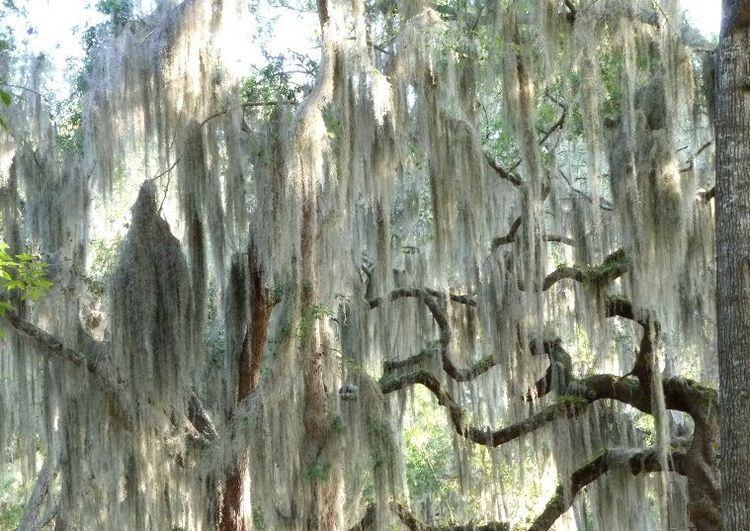 | ||
Similar Tillandsia, Bromeliads, Southern live oak, Tillandsia ionantha, Bald cypress | ||
Air plant care must know spanish moss care and culture tips for tillandsia usneoides
Spanish moss (Tillandsia usneoides) is an epiphytic flowering plant that often grows upon larger trees in tropical and subtropical climates, native to much of Mexico, Bermuda, the Bahamas, Central America, South America, the southern United States, and the West Indies as well as being naturalized in Queensland (Australia) and in French Polynesia. In the United States where it is most known from, it is commonly found on the southern live oak (Quercus virginiana) and bald-cypress (Taxodium distichum) in the lowlands, swamps, and savannas of the southeastern United States from Texas and Florida north through southern Arkansas and Virginia.
Contents
- Air plant care must know spanish moss care and culture tips for tillandsia usneoides
- How to grow spanish moss and where to order it from
- Description
- Ecology
- Culture and folklore
- Human uses
- Cultivars
- Hybrids
- References

This plant's specific name usneoides means "resembling Usnea", and it indeed superficially resembles its namesake Usnea, also known as beard lichen, but in fact Spanish moss is neither a moss nor a lichen. Instead, it is a flowering plant (angiosperm) in the family Bromeliaceae (the bromeliads) which grows hanging from tree branches in full sun through partial shade. Formerly this plant has been placed in the genera Anoplophytum, Caraguata, and Renealmia. The northern limit of its natural range is Northampton County, Virginia, with unsubstantiated colonial-era reports in southern Maryland where no populations are now known to be extant. The primary range is in the southeastern United States (including Puerto Rico), through Argentina, growing where the climate is warm enough and has a relatively high average humidity. It has been introduced to similar locations around the world, including Hawaii and Australia.
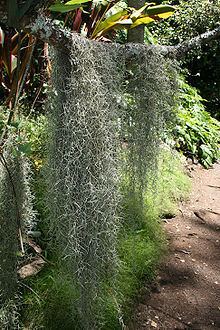
How to grow spanish moss and where to order it from
Description
The plant consists of one or more slender stems bearing alternate thin, curved or curly, heavily scaled leaves 2–6 cm (0.8–2.4 in) long and 1 mm (0.04 in) broad, that grow vegetatively in chain-like fashion (pendant), forming hanging structures up to 6 m (240 in) in length. The plant has no aerial roots and its brown, green, or yellow flowers are tiny and inconspicuous. It propagates both by seed and vegetatively by fragments that blow on the wind and stick to tree limbs, or are carried by birds as nesting material.
Ecology
Spanish-moss is an epiphyte which absorbs nutrients and water through its leaves from the air and rainfall.
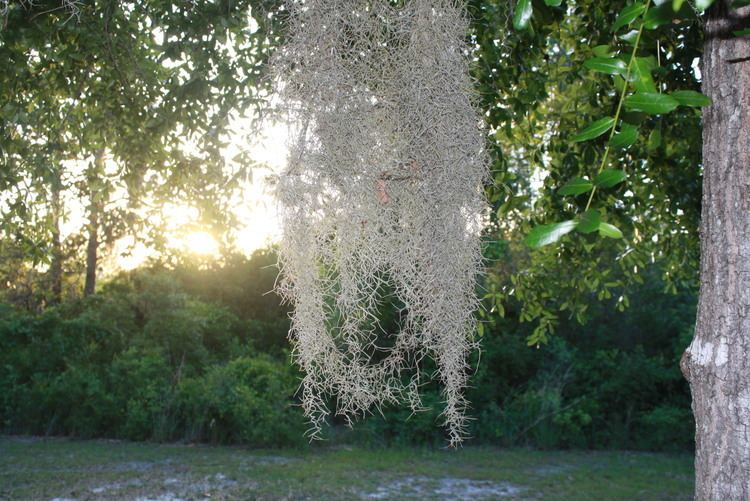
While it rarely kills the tree upon which it grows, it can occasionally become so thick that it shades the tree's leaves and lowers its growth rate.
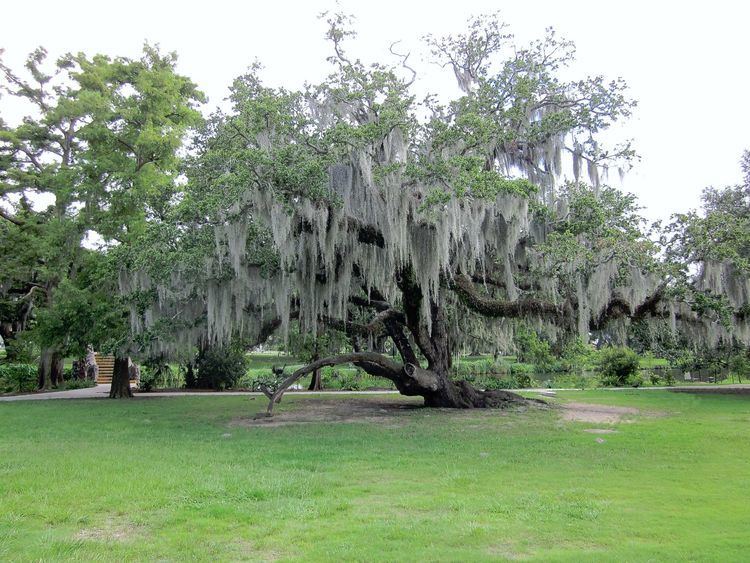
In the southern U.S., the plant seems to show a preference for growth on southern live oak (Quercus virginiana) and bald cypress (Taxodium distichum) because of these trees' high rates of foliar mineral leaching (calcium, magnesium, potassium, and phosphorus) providing an abundant supply of nutrients to the plant, but it can also colonize other tree species such as sweetgum (Liquidambar styraciflua), crepe-myrtles (Lagerstroemia spp.), other oaks, and even pines.
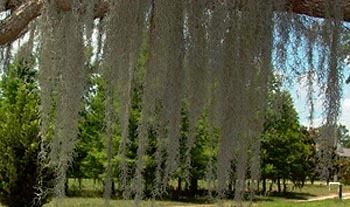
Spanish-moss shelters a number of creatures, including rat snakes and three species of bats. One species of jumping spider, Pelegrina tillandsiae, has been found only on Spanish-moss. Chiggers, though widely assumed to infest Spanish-moss, were not present among thousands of other arthropods identified in one study.
Culture and folklore
Due to its propensity for growing in subtropical humid southern locales like Georgia, South Carolina, Louisiana, Mississippi, Florida, North Carolina, southeastern Virginia, east and south Texas, and Alabama, the plant is often associated with Southern Gothic imagery and Deep South culture.
It was introduced to Hawaii in the 19th century, and became a popular ornamental and lei plant. On Hawai'i it is often called "Pele's hair" after Pele the Hawaiian goddess. The term "Pele's hair" is also used to refer to a type of filamentous volcanic glass.
Human uses
Spanish-moss has been used for various purposes, including building insulation, mulch, packing material, mattress stuffing, and fiber. In the early 1900s it was used commercially in the padding of car seats. In 1939 over 10,000 tons of processed Spanish-moss was produced. It is still collected today in smaller quantities for use in arts and crafts, or for beddings for flower gardens, and as an ingredient in the traditional wall covering material bousillage. In some parts of Latin America, Spanish moss is used in Nativity scenes.
In the desert regions of the southwestern United States, dried Spanish-moss plants are used in the manufacture of evaporative coolers, colloquially known as swamp coolers. These are used to cool homes and offices much less expensively than using air conditioners. A pump squirts water onto a pad made of Spanish-moss plants. A fan then pulls air through the pad and into the building. Evaporation of the water on the pads serves to reduce the air temperature, thus cooling the building.
